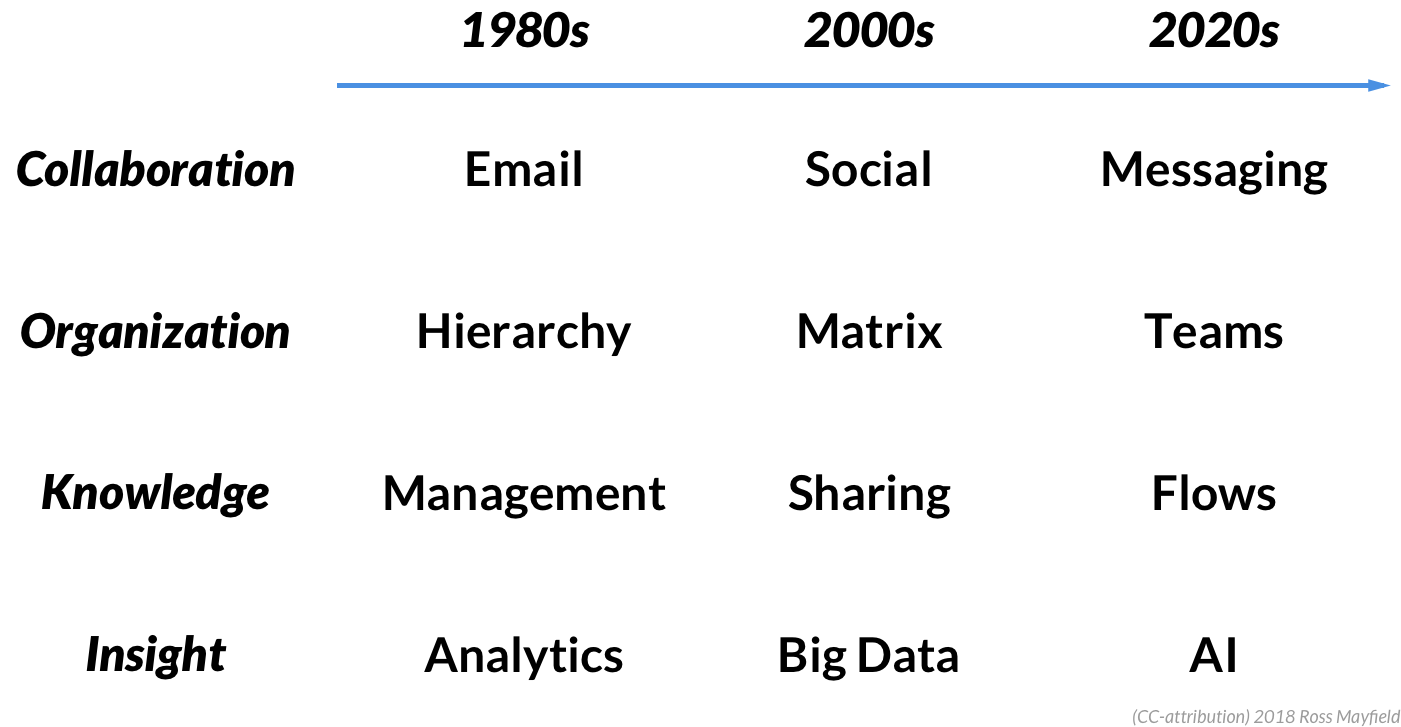Introduction to TeamOps – Pingpad
Introduction to TeamOps
TeamOps empowers teams to achieve higher velocity and continuous improvement through the agile cycle of planning, acting and learning. TeamOps is the combination of practices, apps and cultural philosophies, prompted by the shift to group messaging like Slack beyond software developers. This speed allows business teams to continuously improve and more effectively deliver and compete.

Right now there are fundamental behavior and platform shifts that are shaping the future of work.
Most patterns originate in the consumer sphere and enter the enterprise from the bottom-up (email, IM, LANs, Spreadsheets. How teams and organizations communicate significantly impacts how they collaborate. As consumer behavior shifted from social networking to group messaging apps like WhatsApp with mobile platforms, the behavior change was met with new platforms like Slack in the enterprise. This change is arguably as significant as when email came to work, and at the team-scale more impactful than Social.
Organizational forms are changing, as they transition to Networks of Teams. Knowledge Management is undergoing a similar transition, with the innovation happening at the team-scale, where a key knowledge flow has been unlocked can be turned into a knowledge stock. AL/ML will undoubtedly change the future of work. And we have an opportunity to shape it, not as an automation disruptor, but team augmentation that reduces the chore of coordination and helps find the signal in the noise of collaboration.
When software infrastructure moved to the cloud, making work more connected and flexible, it made modern DevOps needed and possible. The movement of teams to group messaging in the cloud requires new practices, apps and cultural philosophies. TeamOps practices are borne out of agile software development methodologies, and apply to teams like Marketing, Sales, Customer Success and Client Account Management, Creative Teams, BizDev, BizOps and Finance.
Every team is a customer of another team, whether internal or external, and over time they become a Network of Teams. Including connecting your external customer teams (through Shared Channels in Slack).
The Need for TeamOps
Should you implement TeamOps with your team? Yes, if you find these symptoms, and you want your team to be more agile and collaborative.
- Your team suffers from Slack Overload, with too many messages, channels and apps
- Decisions and requirements slip through the cracks
- Knowledge isn’t captured and processes not operationalized
- Projects fail to manage resources, time and quality; teams fail to scale
TeamOps Practices

This is made possible by the shift to group messaging platforms like Slack (75% of teams are adopting), away from email, where teams are synchronously connected more than ever. While this creates new signal-to-noise problems in collaboration, when structured with applied practices, teams can deliver more efficiently, effectively and with continuous improvement.
Plan

Set goals, organize, take ownership and make fast decisions
Act

Visualize work, re-prioritize, focus communication, and customer approval
Learn

Capture and document knowledge, continuously improve workflow
“There has been one thing that consistently shows up on every project gone bad — poor communication. The other factors vary, but communication issues are always at the core of failed projects.” — Tom Atkins, Founder, Quarry House
TeamOps Principles
- Establish shared goals
- Fast decisions and handoffs
- Sole ownership
- Visualize work
- Focused communication and active feedback
- Capture and document feedback and learnings
- Continuous improvement
Applying TeamOps
TeamOps changes the way teams learn from failure to yield continuous improvement. When an exception to a business process happens, it is because the environment has changed. Making the process or workflow out of date or ineffective at seizing the opportunity created in the environment. Often exceptions are managed and suppressed as only a problem. TeamOps celebrates these problems as an opportunity to continuously learn.
While working with customers we found agile methodologies being applied in different business functions from Marketing to Finance, and across verticals, differently. But with common patterns and requirements. Practices across these functions aren’t effectively shared or codified.
We also found the toolset lacking. Fundamentally because the most widely used apps were created before Slack. But also, while there are many great tools, they only focus on part of the problem. Task and Project Management apps almost have intentional amnesia. Teams feel they are effective and have control, but every new project almost starts anew. Like a goldfish content to take another trip around the bowl because it is new and exciting for them. Knowledge Management and Wikis might capture how to do something, but lacks who is doing what, and knowledge capture and documentation doesn’t happen as a byproduct of getting work done. In general, there is too much work about work.
Are you applying TeamOps today in novel ways? Please share the tools, practices and cultural philosophies that work well with your team, or any feedback you have on this initiative.
Pingpad provides a flexible integrated solution for TeamOps. Teams can Plan using Kanban visualization integrated with discussion. Act with task management and drive workflow through Slack engagement. Learn through easily capturing feedback, structuring a knowledge base and operationalizing into repeatable workflows. Join our community of customers advancing the practices of TeamOps.
